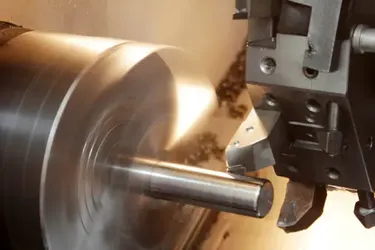What are the 7 Operations of a Lathe Machine?
If you've ever been curious about the world of machining, you might have heard about the lathe machine. This incredible tool has been a staple in manufacturing for centuries, and its versatility makes it indispensable in workshops around the world. In this blog, we'll explore the seven primary operations of a lathe machine, breaking them down in simple, easy-to-understand terms.
1. Turning
Turning is perhaps the most fundamental operation performed on a lathe. In this process, the workpiece is rotated while a cutting tool is moved parallel to the axis of rotation. The primary goal of turning is to remove material from the workpiece to achieve the desired diameter. This operation is used to create cylindrical shapes, including shafts, rods, and other symmetrical objects.
2. Facing
Facing is an operation that involves cutting the end of the workpiece to create a flat surface. This is typically the first step in preparing a workpiece for more complex machining tasks. The cutting tool moves perpendicular to the axis of the workpiece, shaving off the material to produce a smooth, flat face. This is essential for ensuring that the workpiece has a clean, square end, which is crucial for subsequent operations.
3. Parting
Parting, also known as cutting off, is the process of cutting a workpiece into two or more parts. This operation is performed using a parting tool, which is thin and designed to cut through the workpiece with minimal waste. Parting is often used to remove finished parts from a longer piece of material or to separate sections of a workpiece during machining.
4. Drilling
Drilling on a lathe involves using a drill bit to create holes in the workpiece. The workpiece is held in the lathe chuck and rotated, while the drill bit is advanced into the material to form the hole. This operation is essential for creating holes of various diameters and depths, which can be further refined through other processes like reaming or tapping.
5. Boring
Boring is the process of enlarging an existing hole in the workpiece. This operation is typically performed after drilling to achieve a precise diameter and a smooth finish. The boring tool is fed into the hole, removing small amounts of material to refine the size and improve the surface quality. Boring is crucial for creating accurate internal diameters in components like engine cylinders and bearing housings.
6. Knurling
Knurling is a unique operation that involves creating a textured pattern on the surface of the workpiece. This is achieved using a knurling tool, which presses a pattern into the material as it rotates. Knurling is often used to provide a better grip on handles, knobs, and other components where a smooth surface would be impractical. The textured pattern can be straight, angled, or crossed, depending on the tool used.
7. Threading
Threading is the process of cutting screw threads into a workpiece. This operation can be performed on both the external and internal surfaces of the material. The threading tool follows a helical path along the workpiece, creating the thread profile as it moves. Threading is essential for producing fasteners, bolts, nuts, and other components that require precise threads to function correctly.
The Importance of Lathe Operations
Understanding these seven basic lathe operations is crucial for anyone working in manufacturing or metalworking. Each operation has its unique applications and requires specific tools and techniques to achieve the desired results. Mastery of these operations allows machinists to produce a wide range of parts with high precision and efficiency.
Moreover, the lathe machine's ability to perform multiple operations on a single workpiece makes it incredibly versatile. This versatility reduces the need for multiple machines and setups, saving time and increasing productivity in the workshop. Whether you're making simple cylindrical parts or complex components with intricate features, the lathe machine is an essential tool in the machining arsenal.
Tips for Efficient Lathe Operation
Proper Tool Selection: Choosing the right cutting tool for each operation is vital. Different tools are designed for specific tasks, and using the correct tool will ensure better results and longer tool life.
Correct Speed and Feed Rates: Adjusting the speed and feed rates based on the material and operation can significantly impact the quality of the finished part. Too fast or too slow can cause poor surface finish or excessive tool wear.
Regular Maintenance: Keeping the lathe machine well-maintained is crucial for consistent performance. Regularly check for any wear or damage to components and ensure that the machine is properly lubricated.
Precision Setup: Accurate setup of the workpiece and tools is essential for achieving precise results. Take the time to align everything correctly before starting any operation.
Safety First: Always prioritize safety when operating a lathe machine. Wear appropriate protective gear, keep the workspace clean, and follow all safety guidelines to prevent accidents.
Conclusion
The lathe machine is a cornerstone of machining and manufacturing, with its seven primary operations forming the foundation of countless products and components. By mastering turning, facing, parting, drilling, boring, knurling, and threading, machinists can create intricate and precise parts with efficiency and accuracy. Understanding these operations and their applications is key to becoming proficient in machining and harnessing the full potential of a lathe machine.



